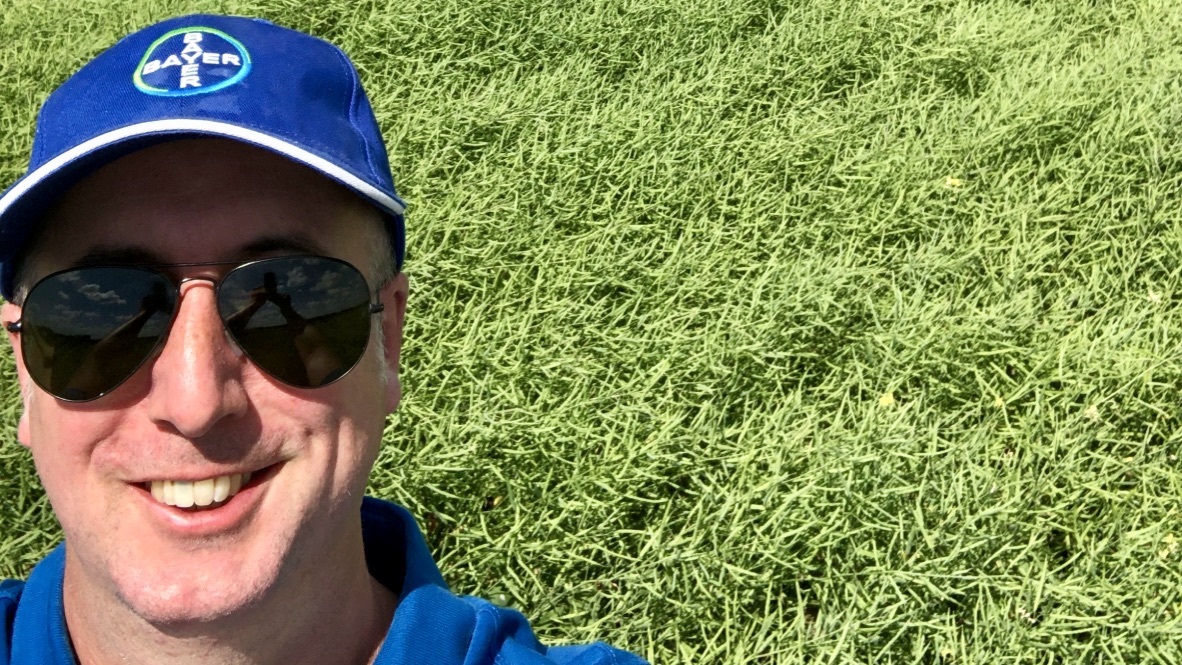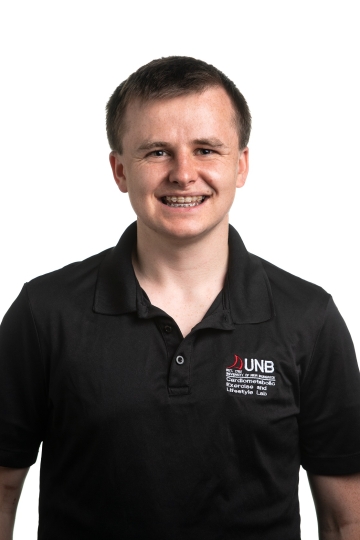Jed Christianson
Canola Seed Development Specialist
Bayer Crop Science Canada
Learn About My Career
Jed works with a global team to develop new varieties of canola for farmers to grow as their crop.
I was born/grew up in: Portage la Prairie, MB
I now live in: Winnipeg, MB
I completed my training/education at: I have a Bachelor of Science in Genetics and a Ph.D. in Plant Genetics both from the University of Alberta
At Bayer Crop Science Canada, I work with a team of people from around the world to develop new canola seed varieties. Some of the people I work with grow plants in the field or growth room for us to test. Others run genetic markers on plant samples. Some of my colleagues are breeding canola in Europe. Other colleagues work in South America and grow canola during our winter for us to bring back and test during our summer. I also work with data scientists who analyze vast amounts of genetic and crop observation data. This helps us understand how and why certain plants grow better in certain environments.
In my work, I spend some time in the field observing new canola lines. Some of the traits that I observe are height, time to maturity, and disease resistance. Mostly I work at my computer analyzing data and drafting presentations. I also spend time meeting with colleagues to solve problems. For example, we might have to develop a plan for how to move tens of thousands of seed samples around the world for testing or to keep them organized for testing in the field. I help plan experiments, analyze data and make decisions on what will be offered to farmers to help them manage disease and environmental stresses.
I rely on my knowledge of genetics, statistics and scientific problem solving to guide me make those decisions. Each year we test tens of thousands of new varieties in controlled and designed field experiments. Our goal is to determine which ones are most likely to be better than existing varieties. We look at such things as the producing yield, minimizing harvest loss, as well as managing weather risk and disease. My scientific background helps me understand how much of the differences we see between lines are due to their inherited characteristics versus variation between fields or growing seasons.
I've enjoyed science and learning how things work since I was young. I used to read science magazines and science fiction through my school years. In high school, I knew that I wanted to study science at University and decided that biology, and genetics in particular, was of most interest to me.
I enrolled at the University of Alberta to do a Bachelor degree in Science with a focus on genetics. At the end of that degree I got to do a small research project with one of my professors. This led to me doing a PhD with him and then to doing academic research in Canada and Australia. Finally, I applied for a job in industry when it was time to settle down and raise a family. I had a general direction that I wanted to go in my career. The exact route depended on talking to people, making connections and taking a chance on opportunities when they arose.
I get excited at work when I get to talk to colleagues about new research advances in plant biology, genomics or breeding methods. I love that I get to stay in touch with new data science methods to process and analyze huge amounts of historic data.
From the science side, it is great to have the ability to understand how elements in the plant genome contribute to heritable characteristics. I love that we are finding new ways to collect data from plants grown in a field using aerial or satellite imagery.
I've always been interested in Science! That sense of discovery, of learning new things, has always been at the heart of that. I get to participate in that in my job and I get to apply those new discoveries in a way that benefits everyone.
I come from an agricultural community and my family has been in the agriculture industry for generations. My work helps Canadian farmers be successful in providing plentiful food with the same or fewer inputs. If the farmers are successful, their communities are also successful. I see the product of my work in every tub of margarine, bottle of cooking oil, or prepared meal made with canola oil.
Outside of work, I enjoy time with my family and at the lake. We travel, cross-country ski, bike and kayak.
Find out what you like and don't be afraid to explore when doing that. Introduce yourself to people even just to talk and learn about what they do. It’s really good to have a plan, but be open to opportunities that are off that track. Be willing to do things that are a little out of your comfort zone and take on new challenges.
What I do at work
At Bayer Crop Science Canada, I work with a team of people from around the world to develop new canola seed varieties. Some of the people I work with grow plants in the field or growth room for us to test. Others run genetic markers on plant samples. Some of my colleagues are breeding canola in Europe. Other colleagues work in South America and grow canola during our winter for us to bring back and test during our summer. I also work with data scientists who analyze vast amounts of genetic and crop observation data. This helps us understand how and why certain plants grow better in certain environments.
In my work, I spend some time in the field observing new canola lines. Some of the traits that I observe are height, time to maturity, and disease resistance. Mostly I work at my computer analyzing data and drafting presentations. I also spend time meeting with colleagues to solve problems. For example, we might have to develop a plan for how to move tens of thousands of seed samples around the world for testing or to keep them organized for testing in the field. I help plan experiments, analyze data and make decisions on what will be offered to farmers to help them manage disease and environmental stresses.
I rely on my knowledge of genetics, statistics and scientific problem solving to guide me make those decisions. Each year we test tens of thousands of new varieties in controlled and designed field experiments. Our goal is to determine which ones are most likely to be better than existing varieties. We look at such things as the producing yield, minimizing harvest loss, as well as managing weather risk and disease. My scientific background helps me understand how much of the differences we see between lines are due to their inherited characteristics versus variation between fields or growing seasons.
My career path is
I've enjoyed science and learning how things work since I was young. I used to read science magazines and science fiction through my school years. In high school, I knew that I wanted to study science at University and decided that biology, and genetics in particular, was of most interest to me.
I enrolled at the University of Alberta to do a Bachelor degree in Science with a focus on genetics. At the end of that degree I got to do a small research project with one of my professors. This led to me doing a PhD with him and then to doing academic research in Canada and Australia. Finally, I applied for a job in industry when it was time to settle down and raise a family. I had a general direction that I wanted to go in my career. The exact route depended on talking to people, making connections and taking a chance on opportunities when they arose.
I am motivated by
I get excited at work when I get to talk to colleagues about new research advances in plant biology, genomics or breeding methods. I love that I get to stay in touch with new data science methods to process and analyze huge amounts of historic data.
From the science side, it is great to have the ability to understand how elements in the plant genome contribute to heritable characteristics. I love that we are finding new ways to collect data from plants grown in a field using aerial or satellite imagery.
I've always been interested in Science! That sense of discovery, of learning new things, has always been at the heart of that. I get to participate in that in my job and I get to apply those new discoveries in a way that benefits everyone.
How I affect peoples’ lives
I come from an agricultural community and my family has been in the agriculture industry for generations. My work helps Canadian farmers be successful in providing plentiful food with the same or fewer inputs. If the farmers are successful, their communities are also successful. I see the product of my work in every tub of margarine, bottle of cooking oil, or prepared meal made with canola oil.
Outside of work I
Outside of work, I enjoy time with my family and at the lake. We travel, cross-country ski, bike and kayak.
My advice to others
Find out what you like and don't be afraid to explore when doing that. Introduce yourself to people even just to talk and learn about what they do. It’s really good to have a plan, but be open to opportunities that are off that track. Be willing to do things that are a little out of your comfort zone and take on new challenges.
When I was a student I enjoyed:
- Literature and language arts
- Math
- Science
When I was a student, I would describe myself as someone who:
- Enjoyed doing things on my own
- Played on a sports team
- Liked reading
- Felt great satisfaction in getting good grades
- Liked being given free range to explore my ideas
- Always knew what I wanted to do
Partners
Bayer Canada

About Bayer
Let's Talk Science appreciates the support of Bayer Canada in connecting us with this individual.
Bayer is a global enterprise with core competencies in the life science fields of health care and nutrition. Its products and services are designed to help people and planet thrive by supporting efforts to master the major challenges presented by a growing and aging global population. Bayer is committed to drive sustainable development and generate a positive impact with its businesses. At the same time, the Group aims to increase its earning power and create value through innovation and growth. The Bayer brand stands for trust, reliability and quality throughout the world. In fiscal 2020, the Group employed around 100,000 people and had sales of 41.4 billion euros. R&D expenses before special items amounted to 4.9 billion euros. For more information, go to the official website.
Related Topics
Explore More Career Profiles
-
Brianna Lummerding
Career Profiles
Agronomic Innovation Manager
I look after all things related to soil management for a group of retailers. -
Li Tan (he/him)
Career Profiles
Molecular Lead
I coordinate the day-to-day operations in the DNA Extraction Lab. -
Tyler Morhart (video)
Career Profiles
Scientist, Beamline Responsible - SyLMAND
I am responsible for the SyLMAND beamline at the Canadian Light Source synchrotron facility. -
Li Tan (Video)
Career Profiles
Molecular Lead
I coordinate the day-to-day operations in the DNA Extraction Lab. -

Rashell Featherstone (she/her)
Career Profiles
Senior Program Associate
I coordinate projects for the development of new products at STEMCELL. -
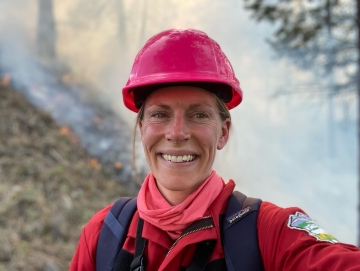
Kira Hoffman (she/her)
Career Profiles
Postdoctoral Researcher/Fire Ecologist
I am a researcher at both a university and a not-for profit organization where I am gaining experience to become a senior researcher. -
Zoë Ehlert (Video)
Career Profiles
Manager, Marker Assisted Breeding
I lead a team that develops canola crops by breeding plants with traits we are looking for. -
Zoë Ehlert
Career Profiles
Manager, Marker Assisted Breeding
I lead a team that develops canola crops by breeding plants with traits we are looking for. -
Jennifer Baltzer (she/her)
Career Profiles
Professor and Canada Research Chair in Forests and Global Change
I work at a university, teaching students and conducting research on the impact of climate change on forests in Canada and around the world. -
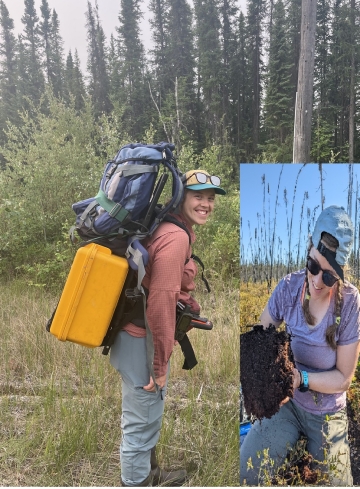
Caitlyn Lyons (she/her)
Career Profiles
Ph.D. Candidate
I am working towards my PhD and studying the forests in the Northwest Territories. -
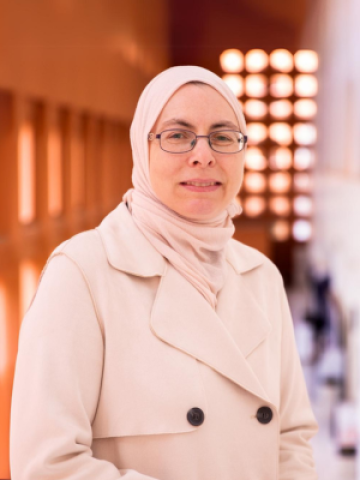
Joann Whalen
Career Profiles
Professor at the Faculty of Agricultural and Environmental Sciences,
I teach advanced courses on how to manage soils to produce healthy, nutritious food and maintain healthy ecosystem functions.
